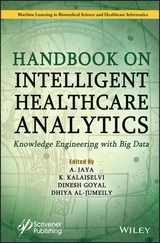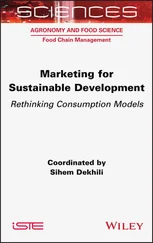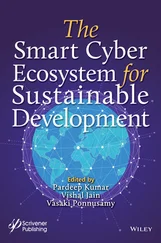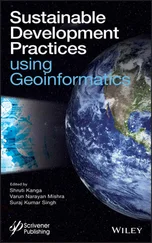Handbook of Intelligent Computing and Optimization for Sustainable Development
Здесь есть возможность читать онлайн «Handbook of Intelligent Computing and Optimization for Sustainable Development» — ознакомительный отрывок электронной книги совершенно бесплатно, а после прочтения отрывка купить полную версию. В некоторых случаях можно слушать аудио, скачать через торрент в формате fb2 и присутствует краткое содержание. Жанр: unrecognised, на английском языке. Описание произведения, (предисловие) а так же отзывы посетителей доступны на портале библиотеки ЛибКат.
- Название:Handbook of Intelligent Computing and Optimization for Sustainable Development
- Автор:
- Жанр:
- Год:неизвестен
- ISBN:нет данных
- Рейтинг книги:5 / 5. Голосов: 1
-
Избранное:Добавить в избранное
- Отзывы:
-
Ваша оценка:
- 100
- 1
- 2
- 3
- 4
- 5
Handbook of Intelligent Computing and Optimization for Sustainable Development: краткое содержание, описание и аннотация
Предлагаем к чтению аннотацию, описание, краткое содержание или предисловие (зависит от того, что написал сам автор книги «Handbook of Intelligent Computing and Optimization for Sustainable Development»). Если вы не нашли необходимую информацию о книге — напишите в комментариях, мы постараемся отыскать её.
This book provides a comprehensive overview of the latest breakthroughs and recent progress in sustainable intelligent computing technologies, applications, and optimization techniques across various industries.
Audience Handbook of Intelligent Computing and Optimization for Sustainable Development
Handbook of Intelligent Computing and Optimization for Sustainable Development — читать онлайн ознакомительный отрывок
Ниже представлен текст книги, разбитый по страницам. Система сохранения места последней прочитанной страницы, позволяет с удобством читать онлайн бесплатно книгу «Handbook of Intelligent Computing and Optimization for Sustainable Development», без необходимости каждый раз заново искать на чём Вы остановились. Поставьте закладку, и сможете в любой момент перейти на страницу, на которой закончили чтение.
Интервал:
Закладка:
2 Chapter 3 Table 3.1 Layers involved in ResNet-101 architecture. Table 3.2 Precision and recall of active garment detection.
3 Chapter 5 Table 5.1 CNN architecture layout for TF images using RML synthetic data set. Table 5.2 Performance comparison analysis for 100 epochs between CsiNet and Ince...
4 Chapter 6 Table 6.1 Comparison of proactive reactive and hybrid protocol. Table 6.2 Comparison of MANETs, VANETs.
5 Chapter 7 Table 7.1 Characteristics of the feed. Table 7.2 Advantages and disadvantages of GMDH-NN method. Table 7.3 Pros and cons of ANN method. Table 7.4 Error analysis of GMDH-NN model.Table 7.5 Comparative study between GMDH-NN model and ANN model.
6 Chapter 8Table 8.1 Evolution of search string.Table 8.2 Results after filters.Table 8.3 Performance keywords.Table 8.4 Keywords of performance.Table 8.5 Merge of performance keywords.Table 8.6 Adaptability keywords.Table 8.7 Keywords extracted from SIG catalogs.Table 8.8 Overview of nonfunctional requirements.Table 8.9 The binary and multi-class metrics.Table 8.10 Common words.Table 8.11 The binary and multi-class classification metrics.
7 Chapter 9Table 9.1 Distribution of data experimentally.Table 9.2 Classification accuracy of various approaches on ImageNet (Second Clas...Table 9.3 Classification accuracy of various approaches on Cats and Dogs dataset...Table 9.4 Classification accuracy of various approaches on Caltech-101 dataset (...
8 Chapter 10Table 10.1 Main instruments used in this process and instrumentation (P & I) dia...Table 10.2 Comparison table.
9 Chapter 11Table 11.1 Percentage relative error in output responses by ANN modeling [53, 54...
10 Chapter 12Table 12.1 Corpus detail of automatic speech recognition system.Table 12.2 Experiment results of speech recognition based on background noise pa...
11 Chapter 13Table 13.1 Automatic text summarization techniques.Table 13.2 Summarization systems ROUGE score.
12 Chapter 14Table 14.1 The framework evaluation and administration ML algorithms.
13 Chapter 16Table 16.1 The different classifiers based on 0.5 threshold.Table 16.2 Different classifiers based on the best threshold generated by ROC th...
14 Chapter 17Table 17.1 Costs for steady-state equations.Table 17.2 Total cost and optimum value.
15 Chapter 19Table 19.1 Study inquiry matrix.
16 Chapter 20Table 20.1 Simulated and measured result (magnitude response) comparison of the ...Table 20.2 Phase response comparison between simulated and measured result.Table 20.3 Magnitude and phase response of the tunable phase shifter using singl...Table 20.4 Magnitude and phase response of the tunable phase shifter using two d...Table 20.5 Magnitude and phase response of the tunable phase shifter using three...Table 20.6 Result comparison between the three designs.
17 Chapter 21Table 21.1 Range for PC measurement.Table 21.2 Range for PPC measurement.Table 21.3 Range for QC measurement.Table 21.4 Range for MGT measurement.Table 21.5 Range for result measurement.Table 21.6 Fuzzy rules for competency strategy.Table 21.7 Range for SD measurement.Table 21.8 Range for GM measurement.Table 21.9 Range for CAM measurement.Table 21.10 Range for AMN measurement.Table 21.11 Range for result measurement.Table 21.12 Fuzzy rules for green sustainability.Table 21.13 Fuzzy values which are assigned to the different crisp variables.Table 21.14 Fuzzy AHP decision matrix for manufacturing competency.Table 21.15 Complete fuzzy AHP matrix for manufacturing competency.Table 21.16 Fuzzy AHP decision matrix for green sustainability.Table 21.17 Complete fuzzy AHP matrix for green sustainability.Table 21.18 Fuzzy numbers for linguistic terms.Table 21.19 Decision matrix for fuzzy MDEMATEL.Table 21.20 Ranking matrix based on fuzzy MDEMATEL.Table 21.21 Fuzzy numbers for linguistic terms.Table 21.22 Normalized weighted decision matrix.Table 21.23 Separation from negative ideal solution.Table 21.24 Separation from positive ideal solution.Table 21.25 Defuzzification and closeness.Table 21.26 Ranking based on modified fuzzy TOPSIS.Table 21.27 Fuzzy numbers for linguistic terms.Table 21.28 Modified fuzzy VIKOR decision matrix.Table 21.29 Normalized decision matrix.Table 21.30 S, R, and Q values for fuzzy matrix.Table 21.31 Defuzzified values and ranking based on modified fuzzy VIKOR.Table 21.32 (A) Results of all tools for sustainable green development.Table 21.32 (B) Results of all tools for manufacturing competency.
18 Chapter 23Table 23.1 Circular structure of pufferfish.Table 23.2 Parameters about meta-heuristic optimization algorithm in the test pr...Table 23.3 Benchmark functions.Table 23.4 Benchmark test results.
19 Chapter 24Table 24.1 Multimodal and unimodal benchmark problems.Table 24.2 Multi-modal of fixed dimension benchmarks problems.Table 24.3 Multi-modal of fixed dimension benchmarks problems.Table 24.4 Parameters of the approaches.Table 24.5 SSO, GWO, and HGWOSSO numerical findings of multimodal and unimodal b...Table 24.6 SSO, GWO, and HGWOSSO statistical findings of multimodal and unimodal...Table 24.7 SSO, GWO, and HGWOSSO numerical findings of multimodal of fixed-dimen...Table 24.8 SSO, GWO, and HGWOSSO statistical findings of multimodal of fixed-dim...Table 24.9 SSO, GWO, and HGWOSSO numerical findings of multimodal of fixed-dimen...Table 24.10 SSO, GWO, and HGWOSSO statistical findings of multimodal of fixed-di...Table 24.11 Comparisons between GWO, SSO, and HGWOSSO.
20 Chapter 25Table 25.1 Swarm-based intelligent methods, its merits, and demerits.Table 25.2 Evolutionary algorithms, merits, and demerits.Table 25.3 Physics-based algorithms, merits, and demerits.Table 25.4 Merits and demerits of ecology-based algorithms.
21 Chapter 26Table 26.1 Reduced systems and the fitness values of the PMSM drive in the discr...Table 26.2 Some popular time-domain parameters of the reduced PMSM drive model i...Table 26.3 Some popular performance indices of the reduced PMSM drive system in ...Table 26.4 Controller gains and the fitness function values of the reduced-order...
22 Chapter 27Table 27.1 Datasheet of four marketable PV modules [20, 21].Table 27.2 Range of decision variables for TDM.Table 27.3 Optimal parameters of TDM using different algorithms for KC200GT.Table 27.4 Optimal parameters of TDM using different algorithms for CS6K-280M.Table 27.5 Optimal parameters of TDM using different algorithms for STM6 40-36.Table 27.6 Optimal parameters of TDM using different algorithms for Pro. SW255.Table 27.7 Statistical analysis of error function for TDM.Table 27.8 Wilcoxon rank sum test results for TDM for different PV models.Table 27.9 Corrected p-values for TDM for the Wilcoxon test adding Holm-Bonferro...
23 Chapter 29Table 29.1 ML algorithms for intelligent decision-making in smart irrigation con...Table 29.2 Review of power/energy saving for GIoT–based smart irrigation monitor...Table 29.3 Review of recent GIoT methods to save power/energy for smart agricult...Table 29.4 Review of different edge computing–based smart weather and irrigation...Table 29.5 Specifications of LPWAN techniques.
24 Chapter 30Table 30.1 An example of sentiment term matrix for datasets.Table 30.2 Characteristic of the considered training datasets.Table 30.3 Results with other methods using Sentiment140 Twitter dataset.
25 Chapter 31Table 31.1 Comparison of merits and drawbacks of the present approaches to real-...Table 31.2 Deployment details.Table 31.3 Complexity comparison of data transmission algorithms.
26 Chapter 33Table 33.1 Decision matrix.Table 33.2 Direct relation coefficient matrix.Table 33.3 Normalized matrix (X).Table 33.4 Identity matrix (I).Table 33.5 (I-X) matrix.Table 33.6 (I-X) −1matrix.Table 33.7 Total relation matrix.Table 33.8 C and S calculation.Table 33.9 C and S matrix.Table 33.10 Ranking based on modified DEMATEL.Table 33.11 Decision matrix.Table 33.12 Weighted sum matrix.Table 33.13 Ranking based on WSM.Table 33.14 Decision matrix.Table 33.15 Weighted product matrix.Table 33.16 Ranking based on WPM.Table 33.17 Ranking based on WASPAS.Table 33.18 Decision matrix.Table 33.19 Normalized decision matrix.Table 33.20 Max and Min values from normalized matrix.Table 33.21 Normalized data.Table 33.22 Deviation sequence matrix.Table 33.23 Delta matrix.Table 33.24 Grey relation coefficient matrix.Table 33.25 Ranking based on GRA.Table 33.26 Decision matrix.Table 33.27 Normalized decision matrix.Table 33.28 Utility calculation.Table 33.29 Ranking based on SMART.Table 33.30 Decision matrix.Table 33.31 Best and worst values.Table 33.32 Normalized matrix.Table 33.33 Correlation matrix.Table 33.34 Criteria weight matrix.Table 33.35 Ranking based on CRITIC method.Table 33.36 Decision matrix.Table 33.37 Normalized matrix.Table 33.38 Entropy matrix.Table 33.39 Ranking based on entropy method.Table 33.40 Decision matrix.Table 33.41 PDA matrix.Table 33.42 NDA matrix.Table 33.43 SP jmatrix.Table 33.44 SN jmatrix.Table 33.45 Ranking based on EDAS method.Table 33.46 Decision matrix.Table 33.47 Defuzzified score based on sums of square and square root values.Table 33.48 Normalized and defuzzified rating of alternatives.Table 33.49 Ranking based on MOORA method.Table 33.50 Final reachability matrix of factors.Table 33.51 Iteration 1.Table 33.52 Iteration 2.Table 33.53 Iteration 3.Table 33.54 Iteration 4.Table 33.55 Iteration 5.Table 33.56 Iteration 6.Table 33.57 Iteration 7.Table 33.58 Iteration 8.Table 33.59 Iteration 9.Table 33.60 Iteration 10.
Читать дальшеИнтервал:
Закладка:
Похожие книги на «Handbook of Intelligent Computing and Optimization for Sustainable Development»
Представляем Вашему вниманию похожие книги на «Handbook of Intelligent Computing and Optimization for Sustainable Development» списком для выбора. Мы отобрали схожую по названию и смыслу литературу в надежде предоставить читателям больше вариантов отыскать новые, интересные, ещё непрочитанные произведения.
Обсуждение, отзывы о книге «Handbook of Intelligent Computing and Optimization for Sustainable Development» и просто собственные мнения читателей. Оставьте ваши комментарии, напишите, что Вы думаете о произведении, его смысле или главных героях. Укажите что конкретно понравилось, а что нет, и почему Вы так считаете.












